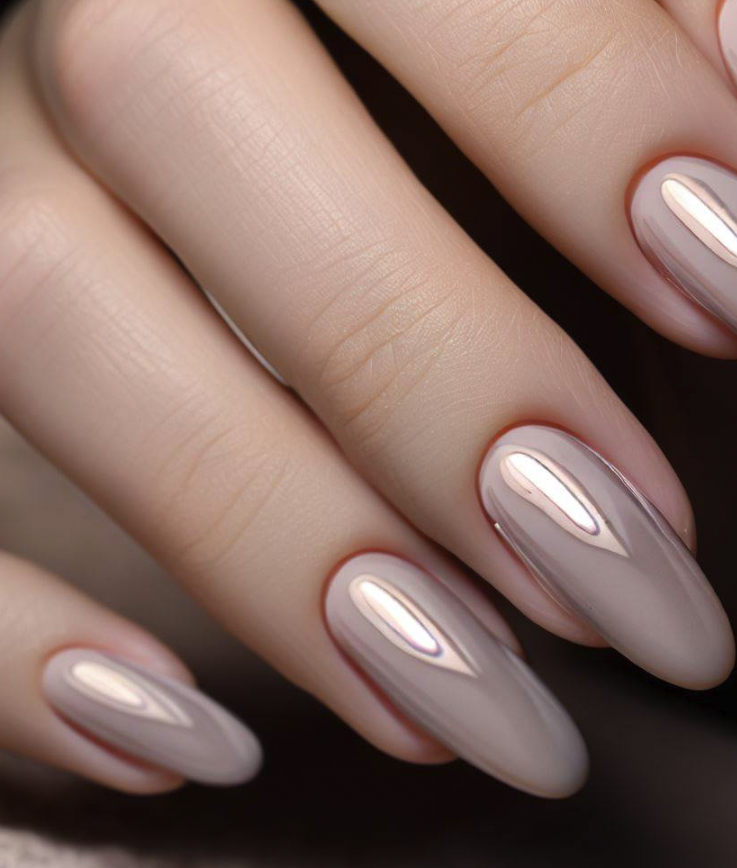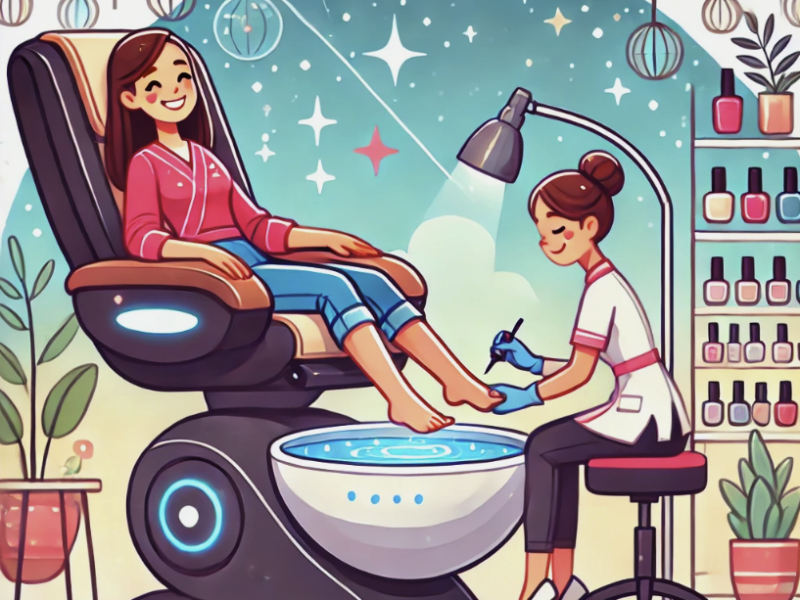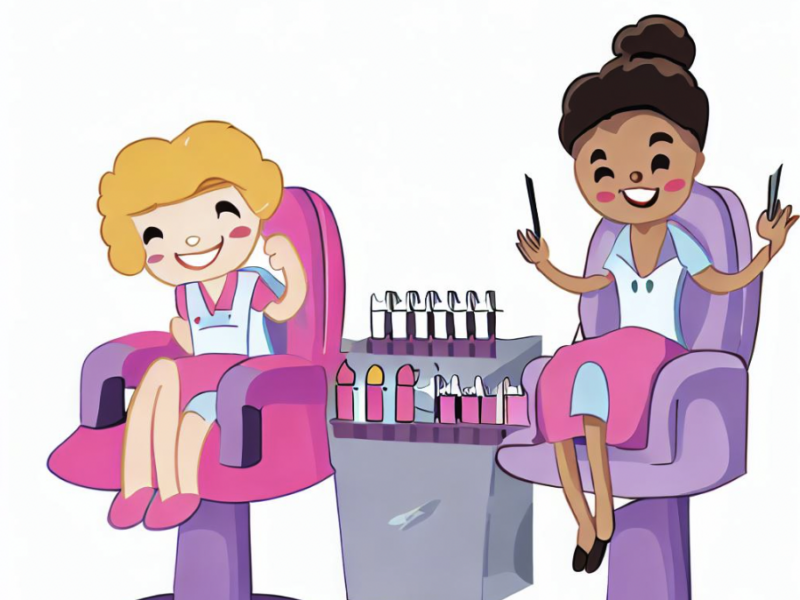Gel nails have become increasingly popular in recent years due to their long-lasting and durable nature.
However, one common question that arises is whether it is possible to use a phone flashlight to cure gel nails.
Can I Use My Phone Flashlight to Cure Gel Nails?
No, using a phone flashlight to cure gel nails is not recommended or effective.
Gel nails require a specific type of UV or LED light source to cure properly.
The phone flashlight does not emit the necessary wavelength or intensity of light required for curing gel nails.
To properly cure gel nails, one should use a UV or LED nail lamp specifically designed for this purpose.
These lamps emit the appropriate wavelengths of light to activate the gel and allow it to harden and cure correctly.
They are designed to provide consistent and even light distribution, ensuring that the gel cures evenly and thoroughly.
Using a phone flashlight or any other random light source may result in incomplete curing, leading to problems such as soft or tacky gel nails, increased risk of chipping or peeling, and reduced longevity of the manicure.
It’s best to use the appropriate equipment to achieve the desired results and maintain the integrity of your gel nails.
What Are Gel Nails?
Gel nails are a type of artificial nail enhancement that involves applying a gel-based substance to the natural nails and then curing it under a UV or LED lamp.
This process creates a hard and glossy finish that can last for several weeks without chipping or peeling.
Gel nails are known for their durability and ability to maintain a high shine.
Why Are Gel Nails Still Sticky After Curing?
How to Do Gel Nails?
The process of doing gel nails involves several steps:
- Prepare the nails by removing any existing polish and shaping them.
- Apply a base coat to protect the natural nails.
- Apply a thin layer of gel polish and cure it under a UV or LED lamp for the recommended time.
- Repeat the previous step for additional layers, depending on the desired color intensity.
- Apply a top coat to seal the gel polish and give it a glossy finish.
- Cure the top coat under the lamp for the recommended time.
- Remove any residue with a cleanser or alcohol.
Conclusion
Gel nails are a popular choice for those seeking long-lasting and durable manicures.
While using a phone flashlight to cure gel nails may seem convenient, it is not recommended as it may not provide the necessary intensity and wavelength of light required for proper curing. It is best to use a UV or LED lamp specifically designed for this purpose.
Additionally, it is important to follow proper application and removal techniques to ensure the health and longevity of your natural nails.
Gel nails offer a wide range of cute and creative designs, and with proper care, they can last for several weeks, making them a worthwhile investment for those seeking a long-lasting manicure.
FAQ – Can I Use My Phone Flashlight to Cure Gel Nails?
1. Can I use my phone flashlight instead of a UV or LED lamp to cure gel nails?
No, using a phone flashlight is not recommended as it may not provide the necessary intensity and wavelength of light required for proper curing.
It is best to use a UV or LED lamp specifically designed for this purpose.
2. Will my gel nails cure properly if I use a phone flashlight?
There is a high chance that your gel nails will not cure properly if you use a phone flashlight.
The light emitted by a phone flashlight is not designed for curing gel polish and may not provide the required level of UV or LED light.
3. What are the risks of using a phone flashlight to cure gel nails?
Using a phone flashlight to cure gel nails can lead to under-cured or improperly cured nails, which may result in chipping, peeling, or premature lifting of the gel polish. It can also affect the longevity and durability of the manicure.
4. Can I use any UV or LED light source to cure gel nails?
No, it is important to use a UV or LED lamp specifically designed for curing gel nails.
These lamps are calibrated to emit the correct intensity and wavelength of light required for proper curing.
5. Are there any alternatives to using a UV or LED lamp for curing gel nails?
If you do not have access to a UV or LED lamp, it is best to visit a professional nail salon where they have the necessary equipment for curing gel nails. Alternatively, you can consider using regular nail polish or other non-gel alternatives.
6. Can I use a regular flashlight instead of a phone flashlight?
Using a regular flashlight is not recommended either, as it is unlikely to provide the required intensity and wavelength of light for proper gel nail curing.
Stick to using a UV or LED lamp designed for this purpose.
7. How long should I cure my gel nails under a UV or LED lamp?
The recommended curing time can vary depending on the brand of gel polish and the specific lamp being used.
It is best to follow the instructions provided by the gel polish manufacturer or consult with a professional nail technician for guidance.
8. Can I cure gel nails under direct sunlight?
No, curing gel nails under direct sunlight is not recommended. Sunlight may not provide the necessary intensity and wavelength of light required for proper curing, and it can also lead to uneven curing and potential damage to the gel polish.
9. Can I use a UV or LED lamp for other nail treatments?
Yes, UV and LED lamps are commonly used for various nail treatments, including curing gel polish, applying gel extensions, and drying regular nail polish.
They are versatile tools that can be used for different purposes in the nail care routine.
10. Can I cure gel nails without a lamp?
No, gel nails require a UV or LED lamp for proper curing.
The gel polish needs the specific light wavelengths emitted by these lamps to harden and set, creating a long-lasting and durable manicure.
11. Can I use a phone flashlight to cure gel nails in an emergency situation?
In emergency situations where a UV or LED lamp is not available, it is best to opt for regular nail polish or other non-gel alternatives.
Using a phone flashlight as a temporary solution may not provide satisfactory results and can compromise the durability of the manicure.
12. Can I cure gel nails with a lower intensity UV or LED lamp?
Using a lower intensity UV or LED lamp may result in under-cured or improperly cured gel nails.
It is important to use a lamp that meets the recommended intensity and wavelength requirements for proper gel nail curing.
13. Can I cure gel nails with a higher intensity UV or LED lamp?
Using a higher intensity UV or LED lamp may not necessarily cause any harm, but it may lead to faster curing times.
It is important to follow the recommended curing times provided by the gel polish manufacturer to ensure optimal results.
14. Can I cure gel nails with a UV or LED lamp that is not specifically designed for nails?
It is best to use a UV or LED lamp that is specifically designed for curing gel nails.
Lamps designed for other purposes may not emit the correct intensity and wavelength of light required for proper gel nail curing.
15. Can I cure gel nails with a UV or LED lamp that is past its recommended lifespan?
Using a UV or LED lamp that is past its recommended lifespan may result in inadequate curing of the gel polish.
It is important to replace the lamp according to the manufacturer’s guidelines to ensure optimal performance.
16. What are some cute designs for gel nails?
Gel nails offer endless possibilities for creative and cute designs.
Here are a few examples:
- French Tips: Classic and elegant, French tips involve painting the tips of the nails white and leaving the rest of the nail bed natural or with a sheer pink shade.
- Glitter Gradient: Create a stunning gradient effect by applying glitter polish from the base of the nails and fading it towards the tips.
- Marble Nails: Achieve a marble-like effect by swirling different colors of gel polish together using a thin brush or toothpick.
- Floral Designs: Add a touch of femininity with delicate floral patterns created using fine brushes or nail art stickers.


